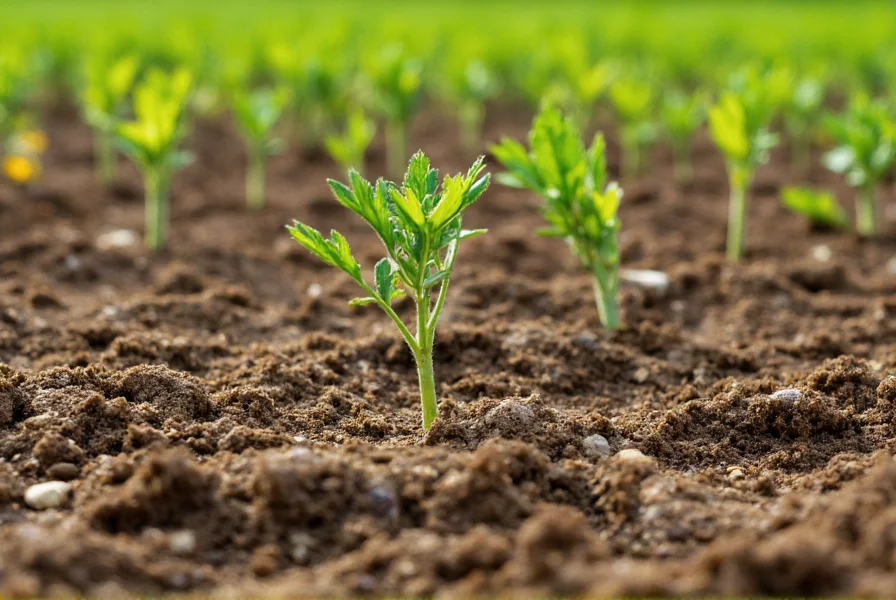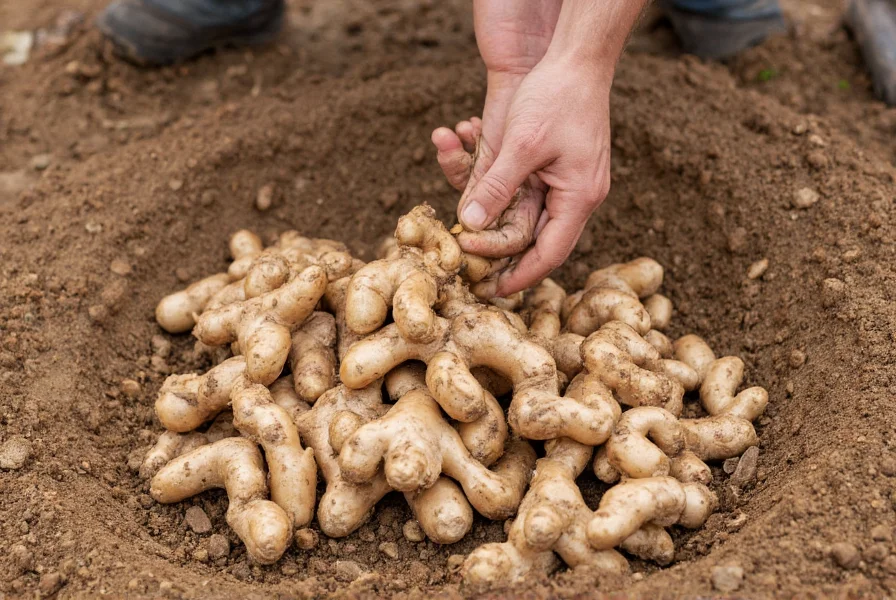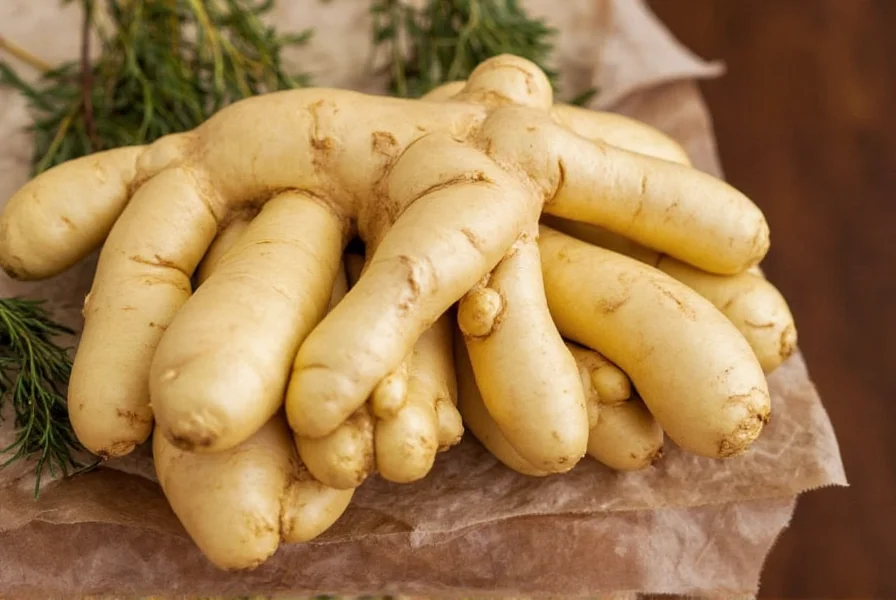Ginger cultivation combines agricultural science with traditional farming practices to produce one of the world's most versatile spices. Whether you're planning to grow ginger in your backyard garden or simply curious about commercial production methods, understanding the complete growth cycle provides valuable insight into this tropical plant's requirements.
Understanding Ginger's Natural Habitat
Ginger (Zingiber officinale) originates from Southeast Asia and thrives in tropical and subtropical climates. The plant grows best in regions with high humidity, consistent rainfall, and temperatures between 71-86°F (22-30°C). Commercial ginger production occurs primarily in India, China, Nigeria, and Thailand, though home gardeners worldwide can successfully cultivate ginger with proper care.
Optimal Soil Conditions for Ginger Cultivation
The foundation of successful ginger farming begins with soil preparation. Ginger requires:
- Well-draining loamy soil with high organic matter content
- pH level between 5.5 and 6.5 (slightly acidic)
- Adequate moisture retention without waterlogging
- Protection from direct, intense sunlight
Before planting, farmers typically amend the soil with compost or well-rotted manure to improve fertility and structure. Raised beds are commonly used in commercial operations to ensure proper drainage, especially in regions with heavy rainfall.
| Soil Component | Optimal Range | Importance |
|---|---|---|
| pH Level | 5.5-6.5 | Affects nutrient availability |
| Organic Matter | 3-5% | Improves soil structure and moisture retention |
| Drainage | Excellent | Prevents rhizome rot |
Selecting Quality Ginger Rhizomes for Planting
The quality of your ginger crop begins with selecting healthy planting material. When choosing ginger rhizomes for cultivation:
- Look for plump, firm rhizomes with multiple growth buds (eyes)
- Avoid shriveled or moldy specimens
- Choose organic ginger when possible to avoid growth inhibitors
- Soak rhizomes in water for 24-48 hours before planting to stimulate growth
Commercial growers often use certified disease-free seed rhizomes to prevent crop failure. Home gardeners can successfully use grocery store ginger, though results may vary as some commercial ginger is treated to prevent sprouting.
Step-by-Step Ginger Planting Process
Whether you're growing ginger in a garden bed or container, follow these essential planting steps for optimal results:
- Timing: Plant ginger at the beginning of the warm, rainy season (typically spring in most regions)
- Preparation: Break rhizomes into 1-2 inch pieces, ensuring each piece has 1-2 growth buds
- Planting Depth: Place rhizome pieces 2-4 inches deep with growth buds facing upward
- Spacing: Space plants 8-12 inches apart in rows 18-24 inches apart
- Covering: Cover with soil and mulch to retain moisture
- Watering: Water thoroughly after planting, then maintain consistent moisture

Essential Care Requirements During Growth
Ginger requires consistent care throughout its 8-10 month growth cycle:
Water Management
Maintain consistent soil moisture without waterlogging. Ginger needs approximately 1-2 inches of water per week. During dry periods, increase watering frequency, but reduce irrigation as harvest approaches to prevent rhizome rot.
Shade Requirements
Ginger grows best with 70-80% shade, especially in hotter climates. In home gardens, plant ginger beneath taller plants or use shade cloth. Commercial operations often intercrop ginger with fruit trees that provide natural shade.
Fertilization Schedule
Apply balanced organic fertilizer every 4-6 weeks during the growing season. Many growers use a 10-10-10 NPK fertilizer or compost tea. Reduce nitrogen application as harvest approaches to encourage rhizome development rather than leaf growth.
Common Pests and Diseases in Ginger Farming
Ginger cultivation faces several biological challenges that require careful management:
| Pest/Disease | Symptoms | Management Strategy |
|---|---|---|
| Shoot Borer | Wilted shoots, holes in stems | Remove and destroy affected shoots, neem oil spray |
| Rhizome Rot | Soft, decaying rhizomes, yellowing leaves | Improve drainage, crop rotation, disease-free planting material |
| Leaf Spot | Brown spots on leaves | Remove affected leaves, copper-based fungicides |
Organic ginger farming emphasizes preventive measures like crop rotation, proper spacing for air circulation, and maintaining healthy soil rather than chemical interventions.
Harvesting Ginger: Timing and Technique
Knowing when and how to harvest ginger significantly impacts yield and quality:
- Harvest Timing: Ginger is typically ready for harvest 8-10 months after planting, when leaves turn yellow and begin to die back
- Young Ginger: Can be harvested earlier (4-6 months) for more tender, less fibrous rhizomes
- Mature Ginger: Wait until full maturity for maximum pungency and storage potential
To harvest ginger:
- Reduce watering 2-3 weeks before harvest to dry the soil slightly
- Carefully dig around the plant with a garden fork
- Lift the entire plant with attached rhizomes
- Gently remove soil from rhizomes
- Cut stems 1-2 inches above the rhizome
- Cure rhizomes in a shaded, well-ventilated area for 7-10 days

Post-Harvest Handling and Storage
Proper post-harvest treatment extends ginger's shelf life and maintains quality:
- Cleaning: Gently wash rhizomes with clean water (avoid scrubbing)
- Drying: Air dry completely before storage
- Storage: Store in a cool, dark place with high humidity (70-80°F with 85-90% humidity)
- Refrigeration: Can be stored in the refrigerator for several weeks
- Freezing: Grate and freeze for long-term storage
Troubleshooting Common Ginger Growing Problems
Even with proper care, ginger growers may encounter these issues:
- No sprouting: Check if rhizomes were viable; ensure proper temperature and moisture
- Yellowing leaves: Could indicate overwatering, nutrient deficiency, or disease
- Small rhizomes: May result from insufficient nutrients, overcrowding, or premature harvest
- Rhizome rot: Usually caused by poor drainage or excessive moisture
Successful ginger cultivation requires patience and attention to environmental conditions. By understanding ginger's specific growth requirements and monitoring plants regularly, growers can address issues before they significantly impact yield.
Conclusion: The Complete Ginger Growth Cycle
Ginger cultivation follows a predictable cycle from planting to harvest. Starting with quality rhizomes planted in well-prepared soil during the appropriate season, the plant develops through vegetative growth, flowering (in some varieties), and rhizome development before reaching harvest maturity. Understanding each stage of how ginger is grown commercially or in home gardens allows growers to provide optimal care throughout the plant's life cycle, resulting in healthy, high-quality ginger rhizomes.
Frequently Asked Questions
How long does it take to grow ginger from planting to harvest?
Ginger typically requires 8-10 months from planting to full harvest maturity. Some growers harvest 'young ginger' at 4-6 months for more tender rhizomes, but the full flavor and size develop after the complete growth cycle when the leaves begin to yellow and die back.
Can I grow ginger indoors or in containers?
Yes, ginger grows well in containers indoors. Use a pot at least 12 inches deep with drainage holes, fill with well-draining potting mix, and place in a warm location with indirect light. Maintain consistent moisture and provide monthly fertilizer during the growing season. Container-grown ginger may produce smaller rhizomes but is otherwise similar to garden-grown plants.
What's the best time of year to plant ginger?
The ideal planting time for ginger is at the beginning of the warm, rainy season, typically spring in most regions. Ginger requires warm temperatures (71-86°F or 22-30°C) to sprout and grow. In tropical regions, ginger can be planted year-round, but in temperate climates, plant after the last frost when soil temperatures reach at least 70°F (21°C).
How do I know when ginger is ready to harvest?
Ginger is ready for harvest when the leaves turn yellow and begin to die back, typically 8-10 months after planting. The stems will become dry and brittle. Commercial growers often check a few plants first to assess rhizome size and maturity. For fresh 'young ginger,' harvest when plants are about 4-6 months old and still actively growing.
Why isn't my ginger plant producing large rhizomes?
Several factors can limit ginger rhizome size: insufficient growing time (needs 8-10 months for full development), overcrowding (plants should be spaced 8-12 inches apart), poor soil nutrition, inadequate moisture during critical growth periods, or harvesting too early. Ensure your ginger receives consistent moisture, proper nutrients, and sufficient time to develop before harvest.











 浙公网安备
33010002000092号
浙公网安备
33010002000092号 浙B2-20120091-4
浙B2-20120091-4